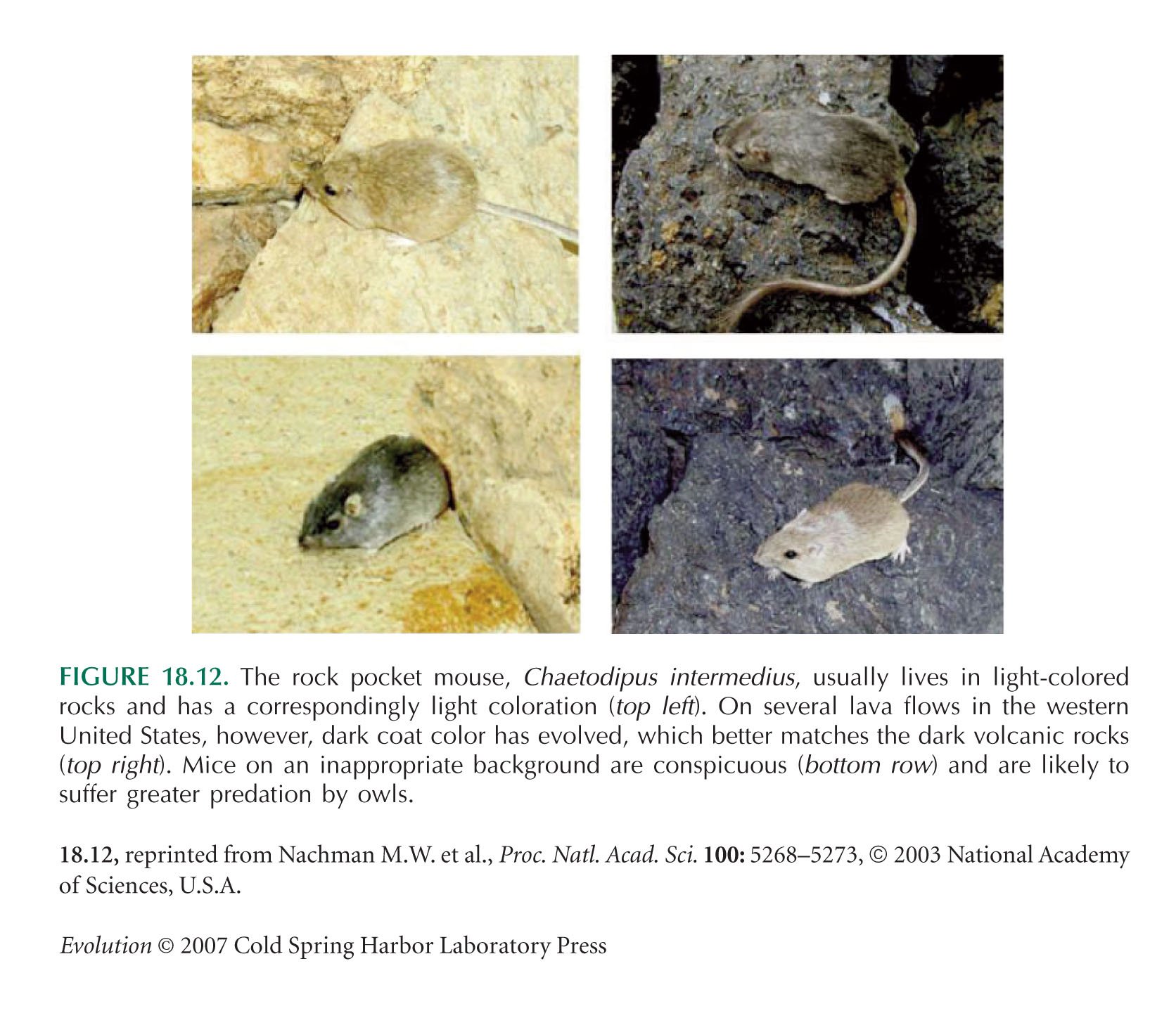

Desert Mice Offer New Lessons on Survival of the Fittest, news article from the University of Arizona. Activity Student Handout Molecular Genetics of the Color Mutations in Rock Pocket Mice To use this document, first read the Instructions and FAQs.This document is licensed by the Howard Hughes Medical Institute under a Creative Commons Attribution-NonCommercial-ShareAlike 4.0 International license.First, we describe the natural history of rock pocket mice and observed. "Different genes underlie adaptive melanism in different populations of rock pocket mice". Importantly for our work, many of the genes underlying these processes have. "Ecological genetics of adaptive color polymorphism in pocket mice: geographic variation in selected and neutral genes". ^ Hoekstra HE, Drumm KE, Nachman MW (June 2004)."The genetic basis of adaptive melanism in pocket mice". ^ Nachman MW, Hoekstra HE, D'Agostino SL (April 2003).^ "ITIS Standard Report Page: Perognathus intermedius".old-form url Database entry includes a brief justification of why this species is of least concern Changes in the Mc1r gene sequence are not responsible for the colour difference in the mice sampled from New Mexico, however, leading the researchers to conclude that the almost identical dark coat colours developed multiple times in rock pocket mice, an example of convergent evolution. Thus melanism in rock pocket mice is considered a fabulous example of adaptation by natural selection. Subsequent studies demonstrated that there is strong selective pressure maintaining Mc1r allele and coat colour frequencies across the short geographic distances between the light- and dark-coloured rock islands. battle-drones, battle-drones-demo, battle-drones-red-rock-resistance. In the Pinacate mice, they discovered a perfect association between different versions of the Melanocortin-1 receptor ( Mc41r6) gene and coat colour. Near Foundation has announced a 100M venture fund alongside a venture lab. In 2003, scientists sampled DNA from both light- and dark-coloured rock pocket mice from areas in Pinacate Peaks, Mexico and New Mexico, USA. Natural selection & evolution of Rock Pocket mice Fand review of gene expression This lab ts modificd from lab by the Hounrd Hughes Medicnl Institute. However, darker coloured rock pocket mice are found living amid black, basaltic rock formations. Most rock pocket mouse populations have light, tawny fur consistent with the colour of the desert rocks on which they live. You can find populations of rock pocket mice all over the Sonoran Desert in. Historically, rock pocket mice have been subdivided into as many as ten subspecies (Benson 1933 Dice and Blossom 1937) based on geographical distribution and coat colour. A typical rock pocket mouse is about 170 millimeters long from its nose to. genes have been identified that affect coat color in the laboratory mouse. As with most pocket mice, the tail is longer than the body (~10 cm). Rock pocket mice are generally light-colored and live on light-colored rocks. The breeding season spans a few months, starting in February or March, and the litter size is typically between three and six. It eats mainly plant seeds and makes small burrows in soil close to or under rocks to evade owls, its main predator. C) How does it work?: give a short description of how this mechanism of evolution changes the color ratios of the beetles in the next generation Fig 1A.Found mainly in rocky outcrops in the deserts of the southwestern United States and Mexico, the rock pocket mouse is medium-sized (length ~18 cm, weight ~12–18g) and nocturnal. The activity has a remarkable parallel in the ecological genetics of the rock pocket mouse in Arizona. Heritability of trait In the scenarios below showing changes in the color ratios of beetles over time, describe: A) Mechanism? write in which mechanism of evolution the picture portrays B) Random? state whether it is random or non-random. group activity, as was the original Waddell lab.Non-random differences in survival and reproduction.Genetic Drift -random changes in the population 4. Gene Flow - random migration of individuals into/out of a population 3. Mutation -random change in DNA sequence 2. Mechanisms of Evolution For more info visit: 1. Transcribed image text: Natural selection & evolution of Rock Pocket mice and review of gene expression This lab is modified from a lab by the Howard Hughes Medical Institute. Why did dark-colored rock pocket mice first appear in a population of light-colored rock pocket miceThey have a genetic mutation that affects their fur.


 0 kommentar(er)
0 kommentar(er)
